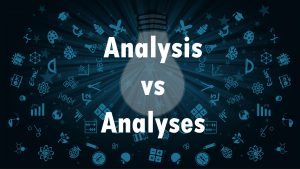Content that is already published elsewhere cannot be used by third parties without accreditation. Plagiarism is the act of copying such published content and not referencing the original author.
Plagiarism became increasingly popular among writers as there used to be no major drawbacks. But search engines have now taken proper measures to stop this immoral practice.
Another factor that has contributed to reducing this unethical act is plagiarism-checking tools. This post will be about these tools and how they foster ethical writing among content creators, students, and more.
Understanding Plagiarism
To understand the decline in plagiarism activities, we first have to understand it completely. The basic definition of plagiarism is already mentioned in the introduction. Now we will help you understand it with the help of examples.
Let us suppose you are writing a blog post about Tips to Improve the SEO of Your Website. Since these types of posts are already on the internet, there is tons of content on the topic.
For instance, here is one:
If you copy it whole and paste it into your content, it will be considered plagiarism. You can only take ideas from such published content. But you cannot copy-paste them.
However, if the content is something like a quote or a statistic, you might have to copy it as is. In this case, you have to cite the source. For example, if you want to add a statistic in the post considered in the above example, you can do so in the following way.
Original:
How to use it:
“An online source states that 68% of online experiences begin with a search engine.”
- In this example, we used a hyperlink. You can also mention the source or give a naked link. In short, you have to use one of the proper citation methods.
If you do not add any such citations, your content will become plagiarized.
Plagiarism Checkers: Functionality and Features
Now you know what plagiarism is. It is time to move on to our main topic, plagiarism checkers. So, what are these?
Plagiarism checkers are online tools that detect whether the content is duplicated. These tools take an input text, compare it with a myriad of online data, and let the users know whether there is a match.
Here are some examples of credible plagiarism checkers:
All of them have closely matching features.
Advantages of Plagiarism Checkers
You might wonder how these online tools can foster ethicality in writing. Well, these tools have made it possible to detect plagiarism instantly. Let us see in detail how this works.
-
Promoting Originality
When a writer knows he will get caught if he plagiarizes content, he refrains from performing such an act. Nowadays, anyone who creates unoriginal content gets detected and penalized.
This applies to every type of content. For example, if you are a student, your teacher could use a plagiarism checker to see whether you cheated. Similarly, if you publish content online, search engines can use plagiarism-checking APIs to see whether the content is copied.
In both cases, users plagiarizing content will be punished.
-
Upholding Ethical Writing Practices
Everyone can differentiate right from wrong. We all know plagiarism is not right. But for people still doing it, plagiarism checkers were introduced. Now, all professional writers know they have to cite a source when using unoriginal content.
Similarly, the complete copying of written content has also decreased substantially. Hence, it is safe to say that these tools are helping society to uphold ethical writing practices.
To overcome this hurdle, writers even tried to resort to other methods, such as article spinning and word changing, which introduced new terms like mosaic plagiarism. It is a type of plagiarism in which you copy content from multiple sources and add them as patches in your content. To avoid plagiarism detectors, writers change words with synonyms.
However, no matter the technique, plagiarism-checking tools powered by AI can now detect them all. In short, these plagiarism detectors have made everyone realize that they should not duplicate content.
-
Building Trust and Credibility
Other than promoting uniqueness and morality in writing, plagiarism checkers also played another key role. They have compelled writers to create content that can better connect with readers.
Search Engine Journal reports that original graphics (visuals) have helped around 40.8% of marketers reach their goals.
This is because original ideas and new information provide value to your readers and credibility to your content. The same situation is in academics. Instead of an author and an audience, trust builds between the student and the teacher.
You can enjoy all these benefits as well just by creating original content. Because otherwise, your content will be regarded as worthless once it goes through a plagiarism checker.
Limitations of Plagiarism Checkers
With so many rewards already explained, it is only natural that these tools also have a few drawbacks. Some of them are given in these points:
- Cannot detect paraphrasing plagiarism (in which content is copied but the wording is altered).
- Flags cited content as well: This is because cited content is usually written word for word.
- Unable to understand the intent: Consequently, these tools might detect plagiarism in sentences that have a kind of matching words with a source but different intent.
- Limited data coverage: This means that these checkers might not be able to access every single piece of information on the internet while giving plagiarism reports.
Conclusion

It is disappointing that we need modern tools to stop people from plagiarizing content. But it, unfortunately, is a sad reality. Nevertheless, these plagiarism checkers have resolved the problem of content stealing significantly.
If you want to avoid getting penalized for copying, use one of these tools to ensure that you have original content. Because even unintentionally plagiarized writing can be harmful to you.
















